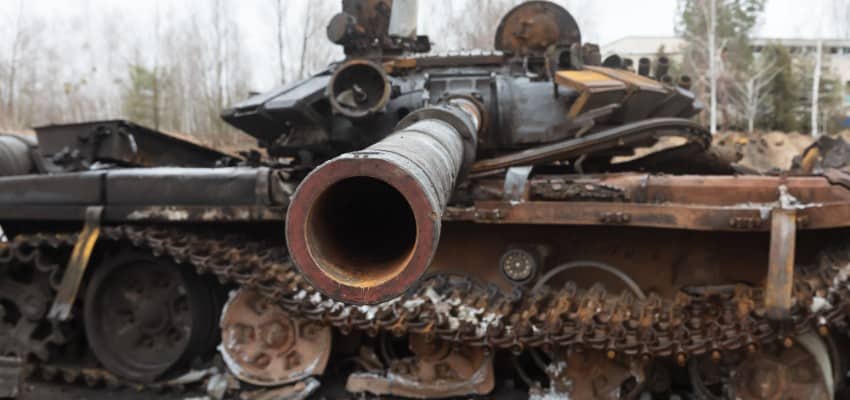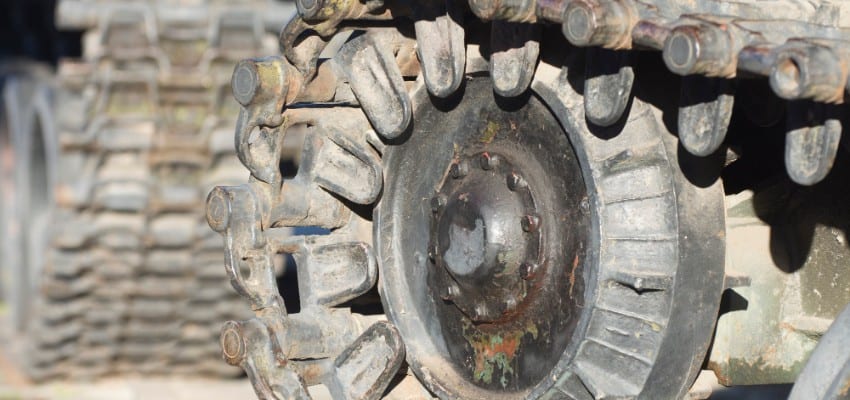|
|
Content Assessment: A Combat Power Challenge? Ukraine Conflict Assessments in Maps (April 7 – 9, 2022)
Information - 96%
Insight - 98%
Relevance - 96%
Objectivity - 94%
Authority - 95%
96%
Excellent
A short percentage-based assessment of the qualitative benefit of the post highlighting the recent Ukraine conflict assessments in maps from the Institute for the Study of War.
Editor’s Note: One of the most accurate and detailed sources for ongoing updates on the Ukraine crisis is the Ukraine Conflict Update from the Institute for the Study of War. The Institute for the Study of War (ISW) is a 501(c)(3) organization and produces strictly non-partisan, non-ideological, fact-based research. ISW seeks to promote an informed understanding of war and military affairs through comprehensive, independent, and accessible open-source research and analysis. ISW’s research is made available to the general public, military practitioners, policymakers, and media members. Providing a daily synthesis of key events related to the Russian aggression against Ukraine, ISW updates may benefit cybersecurity, information governance, and legal discovery professionals as they follow the business, information technology, and legal trends and trajectories impacted by and stemming from the current Ukraine conflict.
Assessment and Maps*
Ukraine Conflict Assessments – An Overview in Maps
- Institute for the Study of War (ISW), Russia Team
- Critical Threats Project (CTP), American Enterprise Institute
General Assessment Background Info
- ISW systematically publishes Russian campaign assessments that include maps highlighting the assessed control of terrain in Ukraine and main Russian maneuver axes.
- These maps augment daily synthetic products that cover key events related to renewed Russian aggression against Ukraine.
Russian Offensive Campaign Assessment on April 9, 2022
Extract (Frederick W. Kagan, George Barros, Kateryna Stepanenko, and Karolina Hird)
The Russian military is attempting to generate sufficient combat power to seize and hold the portions of Donetsk and Luhansk oblasts that it does not currently control after it completes the seizure of Mariupol. There are good reasons to question the Russian armed forces’ ability to do so and their ability to use regenerated combat power effectively despite a reported simplification of the Russian command structure. This update, which we offer on a day without significant military operations on which to report, attempts to explain and unpack some of the complexities involved in making these assessments.
We discuss below some instances in which American and other officials have presented information in ways that may inadvertently exaggerate Russian combat capability. We do not in any way mean to suggest that such exaggeration is intentional. Presenting an accurate picture of a military’s combat power is inherently difficult. Doing so from classified assessments in an unclassified environment is especially so. We respect the efforts and integrity of US and allied officials trying to help the general public understand this conflict and offer the comments below in hopes of helping them in that task.
We assess that the Russian military will struggle to amass a large and combat-capable force of mechanized units to operate in Donbas within the next few months. Russia will likely continue to throw badly damaged and partially reconstituted units piecemeal into offensive operations that make limited gains at great cost. The Russians likely will make gains nevertheless and may either trap or wear down Ukrainian forces enough to secure much of Donetsk and Luhansk Oblasts, but it is at least equally likely that these Russian offensives will culminate before reaching their objectives, as similar Russian operations have done.
The US Department of Defense (DoD) reported on April 8 that the Russian armed forces have lost 15-20 percent of the “combat power” they had arrayed against Ukraine before the invasion. This statement is somewhat (unintentionally) misleading because it uses the phrase “combat power” loosely. The US DoD statements about Russian “combat power” appear to refer to the percentage of troops mobilized for the invasion that are still in principle available for fighting—that is, that are still alive, not badly injured, and with their units. But “combat power” means much more than that. US Army doctrine defines combat power as “the total means of destructive, constructive, and information capabilities that a military unit or formation can apply at a given time.” It identifies eight elements of combat power: “leadership, information, command and control, movement and maneuver, intelligence, fires, sustainment, and protection.” This doctrinal definition obviously encompasses much more than the total number of troops physically present with units and is one of the keys to understanding why Russian forces have performed so poorly in this war despite their large numerical advantage. It is also the key to understanding the evolving next phase of the war.
Key Takeaways
- Russia is unlikely to be able to mass combat power for the fight in eastern Ukraine proportionate to the number of troops and battalion tactical groups it sends there.
- The Russian military continues to suffer from devastating morale, recruitment, and retention problems that seriously undermine its ability to fight effectively.
- The outcome of forthcoming Russian operations in eastern Ukraine remains very much in question.
Ukraine Conflict Maps - 040722-040922
Read the latest Ukraine Conflict updates from the Institute for the Study of War
* Shared with direct express permission from the Institute for the Study of War (ISW).
About the Institute for the Study of War Research Methodology
ISW’s research methodology relies on both primary and secondary sources, enabling researchers to develop a comprehensive understanding of the situation on the ground. In order to analyze military and political developments in any given area, ISW’s research analysts must wholly understand the systems of enemy and friendly forces. They must also understand the population demographics, physical terrain, politics, and history of that area. This lays the analytical foundation for understanding the reasons for particular developments and fulfilling their assigned research objectives. ISW analysts also spend time in places like Iraq, Afghanistan, and elsewhere in order to gain a better understanding of the security and political situation and to evaluate the implementation of current strategies and policies. Our researchers compile data and analyze trends, producing a granular analysis of developments in areas of research, producing an accurate, high-resolution, timely, and thorough picture of the situation. ISW’s research methodology guarantees its success and commitment to improving the nation’s ability to execute military operations, achieve strategic objectives, and respond to emerging problems that may require the use of American military power.
About the Institute for the Study of War
The Institute for the Study of War advances an informed understanding of military affairs through reliable research, trusted analysis, and innovative education. We are committed to improving the nation’s ability to execute military operations and respond to emerging threats in order to achieve U.S. strategic objectives. ISW is a non-partisan, non-profit, public policy research organization. Learn more, get involved, and contribute today.
Additional Reading
- [Annual Update] International Cyber Law in Practice: Interactive Toolkit
- Data Embassies: Sovereignty, Security, and Continuity for Nation-States
Source: ComplexDiscovery























